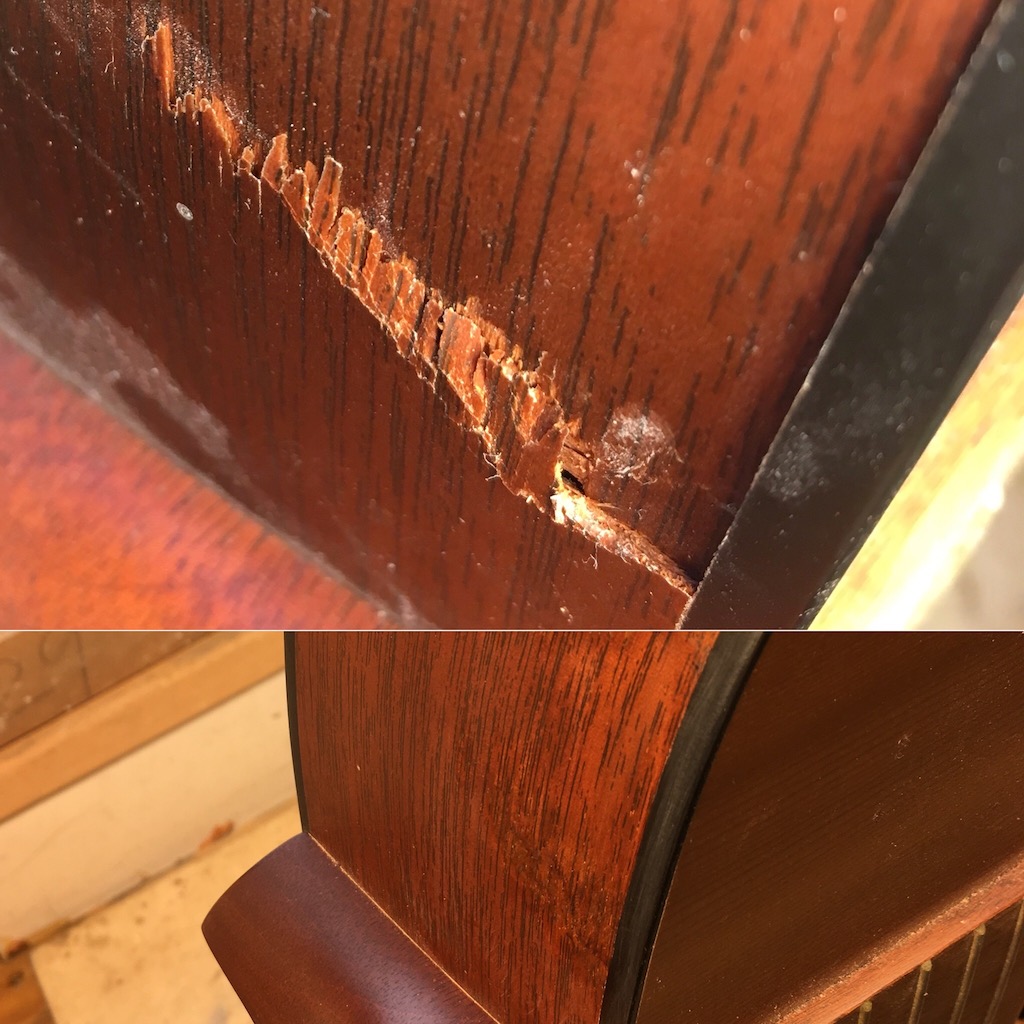Follow-Up: HPL and Laminate Wood Instruments
Just a quick follow-up from the last post regarding the problems repairing HPL guitars. Check it out for more context.
It wouldn't be fair not to mention that instruments made with laminated wood can also have 'mismatched splintering' problems if they break.
Plywood guitars can also be problematic for crack repairs because of the manner in which the different layers can splinter and even delaminate. This is particularly true of newer instruments with very thin, very satin finishes. These finishes are particularly challenging to touch-up well and it's probably good to be 'realistic' if you have to have one of these repaired.
However, despite their repair challenges, laminate wood instruments are still easier to repair — and easier to hide repairs on— than HPL.
The owner of the instrument below didn't want the added expense of involved touch-up but (while it's very far from my most discreet repair), the evidence of damage can still be minimised.
Long story, short: For best results, plan to break a solid-wood, gloss-finished, nitrocellulose guitar. 😉
For even better results, don't break those either.
To be clear here, I'm absolutely NOT commenting on the quality or merits of either HPL, laminate, or solid-wood instruments. I'm discussing one particular point of repairability. If you want to argue other points, feel free to head to /r/OpinionatedGuitarists or something. 😉
This article written by Gerry Hayes and first published at hazeguitars.com











